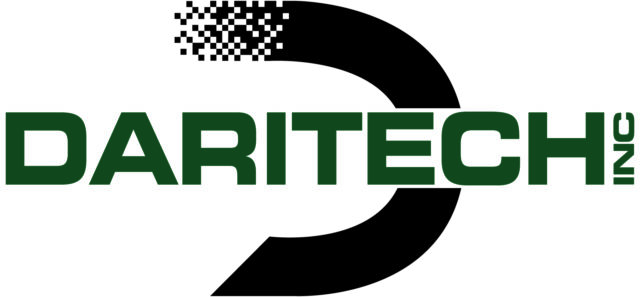In today’s agricultural landscape, farmers face unprecedented challenges that influence every decision, including how to irrigate. High land values, shrinking water supplies, increased regulation and labor shortages are reshaping the way we approach irrigation. To make an informed choice, it’s essential to consider the various irrigation systems available and evaluate their suitability based on specific variables impacting your farm.
Understanding the variables
- High land values: Land prices have skyrocketed, making it critical to maximize productivity on every acre. What percentage of acres do you want to cover?
- Shrinking water supplies: With water becoming scarcer, efficient systems that minimize waste are more important than ever. Regulatory limits on water use also necessitate systems that optimize every drop. Evaluating water use efficiency and uniformity can guide the decision process.
- Increased regulation: Water quantity restrictions are a reality in most states. Water quality of runoff and leaching are here in some areas and soon to follow in many others. Choosing a system that addresses these is crucial.
- Labor shortages: The availability of labor is decreasing, so selecting an irrigation system that minimizes manual input and operational complexity can significantly reduce stress and costs.
Comparing irrigation systems
There are several irrigation options to consider, each with unique advantages and limitations, also shown in Table 1.
- Flood irrigation: A traditional method involving water flow across fields. While inexpensive upfront, it’s often inefficient in water use and can lead to significant runoff and leaching.
- Pivot irrigation: Highly adaptable, center pivots cover large areas with relatively uniform water distribution. Their efficiency depends on water quality and field conditions.
- Subsurface drip irrigation (SDI): Ideal for precision agriculture, SDI delivers water directly to the root zone. It’s highly efficient but has higher initial costs and requires careful maintenance.
- Traveling gun systems: These portable systems are flexible and suitable for irregularly shaped fields but may have lower water application uniformity and require more energy labor. A new variation of this has made the traveling system autonomous and addressed the uniformity using a boom.
- Solid set sprinklers: Fixed sprinklers provide uniform coverage and can handle various water sources, but they require significant labor to install and maintain.

Key considerations for your decision
- Water supply: Evaluate the availability and capital cost of your water source – surface water, groundwater or effluent – and its suitability for the system. Poor water quality may require treatment and/or filtration, adding to costs.
- Cost of applied water: Calculate the cost per inch of water applied, factoring in energy, maintenance and operation. Systems like SDI may have lower ongoing costs despite higher upfront expenses.
- Acreage and coverage: Consider the percentage of your fields the system can irrigate. Pivot systems excel in large open fields, while SDI works well in irregular areas.
- Soil type and health: Soil water-holding capacity influences irrigation frequency and system efficiency. Some systems, like SDI, can improve soil health by reducing compaction and runoff.
- Water and energy efficiency: Uniformity and efficiency are critical. Systems like drip irrigation can achieve over 90% efficiency, while traditional methods such as flood often are less than 50% efficient.
- Operational considerations: Manpower requirements, system life expectancy and maintenance needs vary widely. Automated systems, like pivots and SDI, require less labor but may demand more technical expertise.
- Environmental impact: Assess greenhouse gas (GHG) emissions, nitrogen use efficiency and potential for runoff and leaching. Efficient systems can mitigate environmental concerns and improve public perception.
- Nutrient management: Using manure through irrigation can reduce waste and enhance soil fertility, but it requires careful separation and phosphorus placement to avoid runoff and leaching.
- Insurance and long-term costs: Some systems have higher insurance premiums due to exposure to weather events. Factor in these costs alongside purchase price and expected lifespan.
Water availability and need
How much water do I need to apply? This is a common question for any producer thinking about irrigation for the first time or upgrading an existing system. Evapotranspiration (ET) is the process where water is lost from the soil and plants into the air through evaporation (from the soil and water surfaces) and transpiration (from plant leaves), and it's important for understanding how much water your crops need to stay healthy.
ET rates change continuously, but for context in choosing an irrigation system, we can look at some average crop ET values. On an annual basis, corn will average around 22 to 25 inches of water consumed, while alfalfa will push over 40 inches. To size a water supply, we need to break this down to a daily ET demand (Table 2).

Pairing the ET requirements of crops needed to grow with rainfall in your region, the next step is looking at the water-holding capacity of your soil. Each soil type is made up of different mixes of sand, silt and clay. This website is a great resource to give an in-depth look at the water-holding capacity on your farm. Soil can be viewed as the gas tank and the distance between gas stations is the frequency of when and how much rain there is.
To give perspective on how variable water-holding capacity is across a farm, we pulled examples. A dairy farm in central Minnesota with a shallow sandy soil has as little as 1.5 inches of water-holding capacity in the top 20 inches of soil. Within the same 50-acre field, the heavier soils provide 3.5 inches of water-holding capacity. Move 50 miles west to the prairie soils, and we can consistently find 4 inches of water capacity in the top 20 inches, and the deeper prairie soils allow plants to root down to a much greater depth and access a greater soil reservoir and double the available water to 8 inches at 40 inches of depth. This is why soil health is getting so much deserving attention; if our soils are in good shape, more water is available and accessible.
The frequency and amount of rain during the growing season is the largest variable in any growing season. Rainfall maps and seasonal trends for each region can give us an average, but reality is usually much different. When planning an irrigation system, the goal is to eliminate the variable of rainfall as much as possible. In regions with unlimited water, irrigation would be sized to deliver 0.3 inch of water per day for the growing season. If we equate 0.3 inch of ET to gallons per minute (GPM) per acre, we arrive at 5.6 GPM per acre needed. If the irrigation system is only 60% efficient, the required water jumps to 9.4 GPM per acre. If we have 100 acres, we will need 560 GPM water supply for an efficient system or 940 GPM for an inefficient one.
In many scenarios, the math is done in reverse; the farmer calls and says I have 500 GPM, how many acres can I water with it? Using crop demand, soil type, irrigation type, rainfall averages and irrigation efficiency, the answer can vary from 100 to 200 acres. Local water restrictions can also play a role, as many areas are limited on how many inches can be applied in one season.
Capabilities and limitations
Understanding water application capabilities and limitations of each type of irrigation system will help match the grower with the best fit. The USDA Agricultural Research Service (ARS) provides comparative efficiencies (Table 3).

Flood irrigation typically requires 10 to 20 GPM per acre and is 50% to 60% efficient. Center pivots can operate in the 3 to 7 GPM per acre with efficiencies around 75% to 85%. SDI will be the most efficient at 90% to 95% and can apply from 2 to 10 GPM per acre. Traveling guns and autonomous reels are 60% to 80% efficient but will be limited on amount of water they can apply by the size of hose in each unit. Typically, these have 3- or 4-inch hoses and apply 200 to 300 GPM per unit, so each unit can handle 40 to 60 acres.
Many advances have been made in recent years to utilize the irrigation system to not only deliver water but also nutrients, such as dairy manure. Separating liquids from solids and ensuring the irrigation system will not plug is key. New separation equipment with screen sizes down to 20 microns ensures the solids have been removed and will not plug and allow manure to be applied with SDI. The economic benefits of manure application with irrigation systems can reduce application cost more than 95% or more when compared to cost of dragline or liquid manure spreaders.
Additionally, applying when a crop is growing gives flexibility of timing, reduces the workload of fall application and is better for the crop and the environment. It can create odor issues with neighbors as well as large GHG emissions if being sprayed in the air. Carefully consider all systems.
Making the right choice
Research from institutions like Kansas State University (KSU), University of Nebraska (UNL), Illinois Crop Physiology and the USDA-ARS research sites provide valuable insights. Additional research from Beck’s Hybrid's and Precision Plantings PTI farm have extensive trials in diverse conditions.
Selecting the best irrigation system for your farm requires a balance between immediate costs and long-term benefits. By carefully considering water availability, soil type, acreage and environmental impact, you can choose a system that not only meets your current needs but also positions your farm for future success.
In an era of increasing challenges, investing in the right irrigation technology is a step toward sustainable and profitable farming. Evaluate your options thoroughly and consult with experts to ensure the best fit for your operation.










